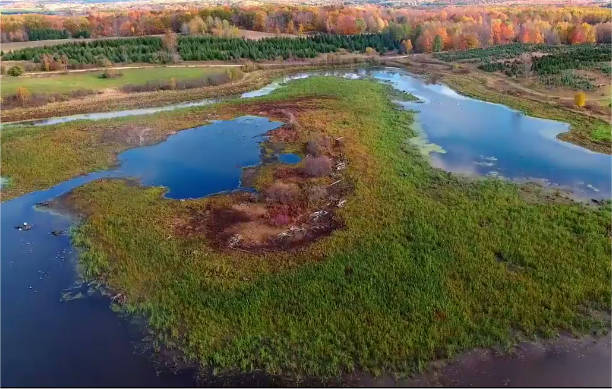Potash Mining Company wants to do WHAT?
ATTEND: Potash Mine DEQ Public Hearing on Injection Wells on March 12.
11 Injection wells have been OK’d by the EPA for proposed Potash Mine in
sensitive wetlands in Muskegon River Watershed in Osceola county.
We ask you to attend the DEQ Public Hearing. The potash mine will initially take 1200 gallons
per minute of WATER, poison the water with highly toxic brines, hydrogen sulfide, and various
hydrocarbons, then inject toxic water underground in sensitive wetland areas that flow into the
Muskegon River. This is near Hersey, a short distance (5 Miles) downstream from where Nestlé is
currently pumping millions of gallons of water in Osceola County to sell Ice Mountain bottled water.
Public Hearing is on Monday, March 12, 2018, from 6:00 to 9:00pm at the Evart
Middle School Auditorium (321 North Hemlock St., Evart, Michigan 49631).
The EPA has already approved these 11 injection wells “eight solution mining wells (EPA UIC
Class III) and three non-hazardous processed brine disposal wells (EPA UIC Class I) permit
applications. These types of wells are dually permitted by the Michigan Department of
Environmental Quality (DEQ), Oil, Gas, and Minerals Division (OGMD) and the United States
Environmental Protection Agency (USEPA), Underground Injection Control Program (UIC). Based
upon previous correspondence with the DEQ, Michigan Citizens for Water Conservation has
expressed interest and concern regarding this project and has requested a public hearing.”
(DEQ announcement)
The DEQ will offer information (answer your questions) and offer you an opportunity to make a
Comment on these injection wells.
Public comments will be accepted at this hearing and may also be submitted via email to:
DEQ-OGMDpubliccomments@michigan.gov
MCWC is opposed to permitting 11 injection wells for Michigan Potash, LLC. We ask that you
read more about Michigan Potash Mine on website https://archive.savemiwater.org/michigan-potash-
company/ and please do send us a message for more information.
There are substantial questions to this potash mining plan. What are the economic values and
what are environmental risks?
MCWC’s mission is to protect and preserve the Muskegon River Watershed and the Great Lakes
Watershed. We all have a public right to know more about the corporatization of our precious
fresh water resources.
TALKING POINTS:
1. The proposed plant site drains into, and is surrounded by numerous lakes, streams and
wetlands, all interconnected, and residents are totally dependent on private wells. It is the
worst possible site from an environmental standpoint. It was chosen simply because cheap land
was available at that location.
2. Potash mining will require 1.7 million gallons of fresh clean water per day.
3. Once that fresh clean water becomes saturated with toxic brines, it will be disposed of via 3
waste injection wells, beneath the very aquifers which residents rely on for water.
4. The U. S. Environmental Protection Agency (EPA) has determined that, within a 2-mile radius,
these high-pressure injection wells can, and often do, force wastes up into drinking water
aquifers. These wastes commonly travel through cracks in overlying rock, or through old,
deteriorated well-bores. The EPA has identified 36 old deep well-bores within the 2-mile radius
around the proposed plant site. The soundness and/or life expectancy of these old wells is
unknown as none of them have been tested since they were abandoned.
5. At this point, Michigan Potash Company appears to have only one full-time employee (it’s
president, Theodore Pagano) who has never drilled a potash well and has no experience
operating a potash mining facility.
6. At an Evart Township Public Hearing on 2-6- 2018, Mr. Pagano stated: “I cannot guarantee
that there will not be a catastrophic failure.” Yet there is no contingency plan for leaks or spills
and no bond posted to clean up aquifers, lakes, streams, or replace contaminated water wells.
Please learn more about this Potash Mine at MCWC website:
https://archive.savemiwater.org/michigan-potash-company/
Also published on Medium.

